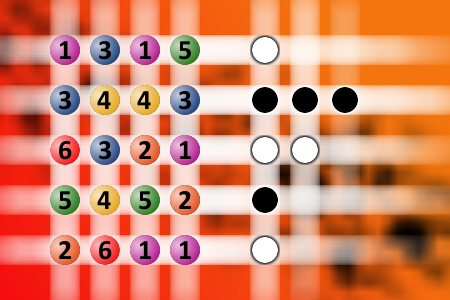Which is a winning combination of digits?
The computer chose a secret code (sequence of 4 digits from 1 to 6). Your goal is to find that code. Black circles indicate the number of hits on the right spot. White circles indicate the number of hits on the wrong spot.Correct answers: 37
The first user who solved this task is Djordje Timotijevic.
#brainteasers #mastermind

Kathleen Madigan: Figure Skating
I always wanted to be a figure skater as a kid, too, that was like my fantasy dream. But whenever I watch it, I think I would have totally done it alone. I dont know how these people have enough control over the tempers to be working with a partner. Because if I worked with some guy for 15 years, and we got to the Olympics, and out of nowhere he just fell -- oh, Id skate around just to chop off his fingers. I would, and I would not feel bad about that -- ever. Now when youre nubbing your cereal spoon in the morning, you can look at that box and remember why were not on it.

